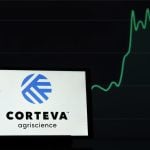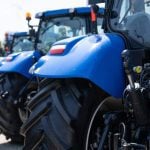
Tag Archives Winter Feeding
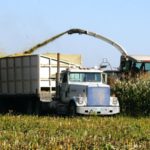
McKinnon: It’s silage season again
For many readers, as this article comes to press, silage season is either just starting or about to start. Putting up high-quality silage is both an art and a science. With this article I will review some of the key aspects of silage fermentation management that relate to putting up high-quality silage. Before we focus […] Read more

What to consider when choosing alternate cattle feed sources
Anything from pea straw to cull potatoes can help producers plug the feed gap
With a hay shortage looming across much of the Prairies, many cattle producers will need to look further afield for feed. There are numerous options for alternate feeds, such as salvaging hail-damaged or stressed crops. Nitrate toxicity is a concern if the crop was highly fertilized with nitrogen, but Barry Yaremcio, beef and forage specialist […] Read more
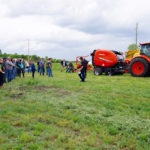
Don’t let hot air spoil your silage
Silage expert highlights dry matter and nutrient loss at a recent hay and silage event in Manitoba
If you think you’ve packed that silage enough, pack it again. That’s among the tidbits from John McKinnon of JJM Nutrition Services in Saskatoon as Manitoba farmers prepare for what’s potentially another bad forage year. Late rains, a delayed or even skipped first hay cut, thin stands, frosts and a generally cold spring all have […] Read more

Bale grazing. ‘What a waste of feed!’ NO
Grazing with Steve Kenyon
I still receive this comment quite often when I speak about bale grazing. Our industry is hung up on being efficient. We don’t want to waste anything. I know we have all been trained to target 97 per cent efficiency in everything we do. But I would rather be effective. Most of our efficiencies come from looking at […] Read more

Bale grazing trial looks at feed waste
Grazing: News Roundup from the December 2018 issue of Canadian Cattlemen
Bale grazing is a common winter feeding practice but how much forage are those cows leaving behind? Alberta Agriculture and Food recently shared results from one trial that examined that question. The Lakeland Agricultural Research Association (LARA) measured waste from bale grazing over four winters, from 2008 through 2011. The study was done using the […] Read more

Strategies for year-round grazing
With careful forage management, cattle can harvest their own feed year-round
Winter feeding is the biggest input cost when raising cattle, so many producers try to minimize the number of days they have to feed hay. In some situations, with careful forage management, cattle can harvest their own feed year-round, especially in mild climates. Even in northern climates with cold weather and snow, year-round grazing can […] Read more

Extending fall and winter grazing
Crop residues are probably the most underutilized source of winter grazing, says extension specialist
Extending the grazing season for cattle can help reduce production costs and there are various ways to increase forage production/utilization to ensure adequate fall grazing that can often be extended into winter. Lorne Klein, range management extension specialist, Ministry of Agriculture in Weyburn, Sask., says there are four sources of forage. “These are native prairie, […] Read more
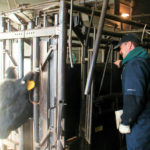
Get cows and heifers ready for winter now
No matter your feeding system, have your breeding animals in good condition before the snow flies
If cows and heifers aren’t there already, there is a short window to get them into a proper body condition for winter. If you have skinny or poor condition cows heading into winter, that December to March period is probably one of the toughest and most expensive times to try to get them back into […] Read more

The economics behind bale grazing
Grazing with Steve Kenyon
I started bale grazing in 1999 and have had many producers over the years thank me for sharing my bale grazing information with them. The usual comment is that they will never go back to the traditional method of feeding cattle. For me, bale grazing was a no-brainer once I looked at the cost savings. […] Read more

The economics behind bale grazing
Grazing with Steve Kenyon
A lot of farmers only see one type of cost when it comes to feeding cattle. They see the feed cost. However, there are other costs which are often overlooked. This would be the act of feeding, also called the yardage cost. The reason this is not always included is because it is not a […] Read more

